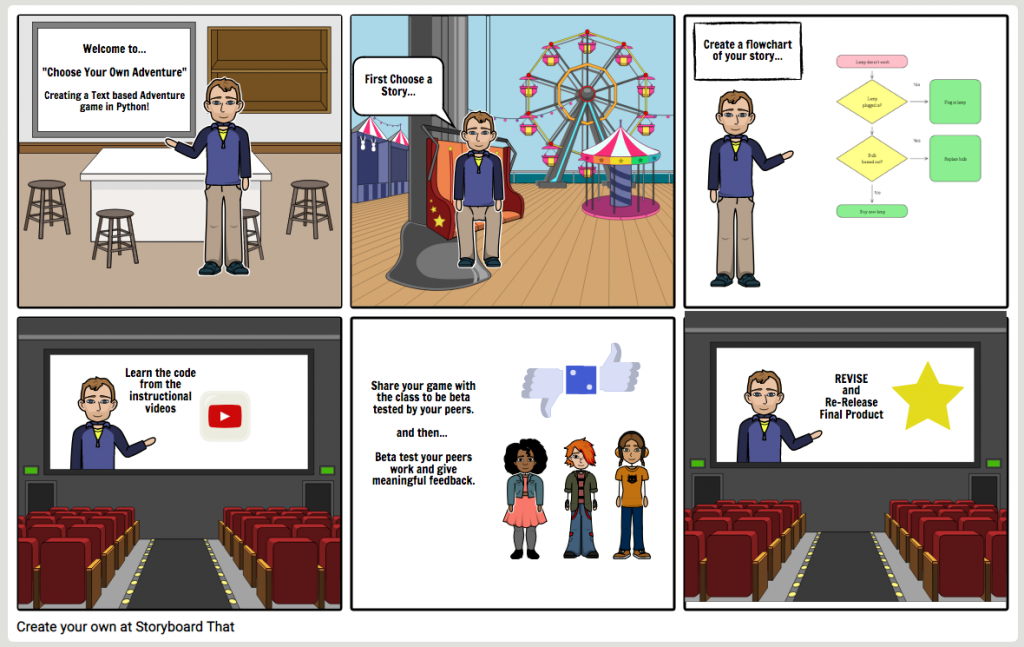 The top level of the course outline breaks down in the six main sections.
The top level of the course outline breaks down in the six main sections.
Scene 1
Students are welcomed to the course and the tools and requirements of the course are discussed. The use of Trinket.io, Google Docs, YouTube and EdPuzzle are discussed at an introductory level.
Scene 2
Students are asked to choose a story. The story requirements are conveyed with a focus on choosing stories that have at least 20 choices for the end user to choose. Stories that focus on historical events or relate directly to other subject areas will gain extra points during the grading process.
Scene 3
Creating an accurate flow chart of the the story is a crucial part of the planning of this project. Students often find holes in their story or unviable plot lines once they see it mapped out. The use of Google Drawings is recommended but any other tool will also be accepted in digital form.
Scene 4
Time to get coding! This section will consist of five videos hosted on YouTube. Some of the videos will include EdPuzzle questions to keep students focused. “Please code along with me” is repeated during the series to help students cover the essential code needed to complete the text adventure game. The videos will be filmed with a green screen so I won’t block too much fo the screen. The topics of the videos will include Introduction to Trinket.io, Basic Input and IF statements, IF, ELIF, and ELSE logic, While Loops, declaring Functions, and the use of Multiple Functions to control program flow.
Scene 5
Students will submit their project to the instructor and discussion group. Using the course rubric as a guide participants will play each game and give constructive “beta testing” feedback via a Google Form. “The results of the feedback will be shared with the entire class and the form will document everyone’s participation and comments.”
Scene 6
Using the beta testing feedback, students will revise, repair and then re-release the choose your own adventure game. All changes made in the code will be documented in a Google Doc based “ChangeLog” that lists each “bug”, the date it was found and the resolution. This document will be handed in with the final version, version 2.0, of the student’s game.
While perhaps this is not a direct word for word script, the micro-course will follow these stage directions. 🙂